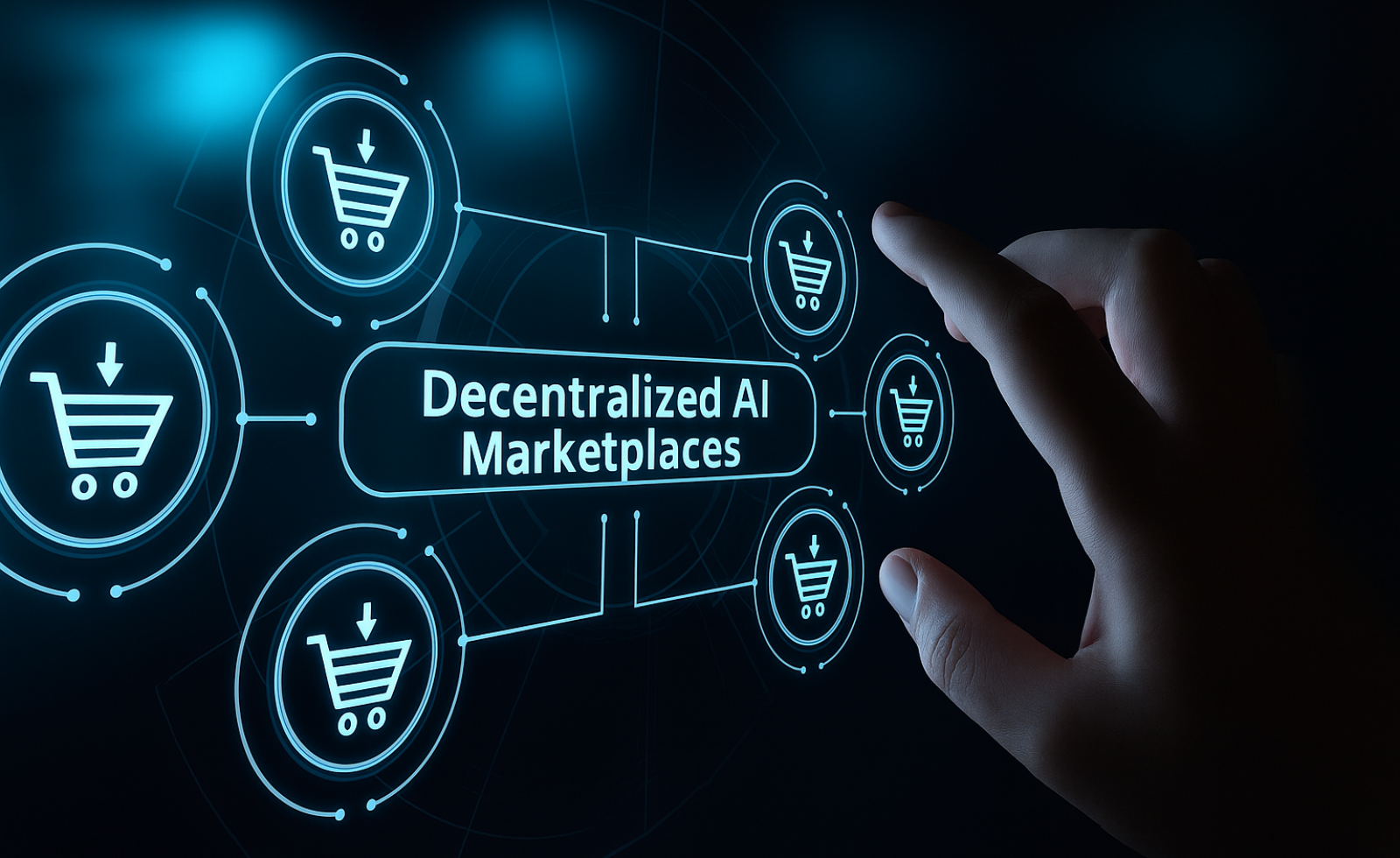AI Meets Crypto: The Rise of AI Tokens in Web3
As the lines between artificial intelligence and blockchain technology continue to blur, a new category of digital asset has emerged at the intersection: the AI token. This innovation sits at the core of a growing movement to decentralize how AI is built, accessed, and governed. In the post-ChatGPT era, where demand for smarter, autonomous systems is booming. The integration of token economies into AI ecosystems isn’t just a trend. It’s quickly becoming foundational.
AI tokens are the native currencies of decentralized AI networks and marketplaces. They allow developers to monetize their models, users to pay for access to services, and communities to participate in the governance of the ecosystem itself. As Web3 infrastructure expands to support more intelligent, automated systems, AI tokens will play a critical role in aligning incentives, securing operations, and enabling scale.
What Is an AI Token? Use Cases in AI Access and Automation
At its core, an AI token is a blockchain-based digital asset designed to facilitate interaction within an AI-powered ecosystem. Unlike traditional tokens used solely for transactions or speculation, AI tokens unlock practical functions: access to machine learning models, deployment of AI agents, API usage, and even control over governance protocols.
These tokens serve as the connective tissue between multiple stakeholders, model developers, infrastructure providers, and end users. For instance, a developer can publish a computer vision model on a decentralized marketplace, while a business pays with AI tokens to integrate that model into its logistics operations. In return, the developer earns tokens proportionate to usage, all while the platform manages the flow securely through smart contracts.
From Payments to Governance: The Multi-Utility Design of AI Tokens
AI tokens are not limited to serving as payment mechanisms. One of their defining features is utility, specifically, multi-utility within the AI ecosystem. This includes enabling users to stake tokens for access tiers, vote on platform upgrades, receive usage-based discounts, or even signal demand for certain types of models or services.
Governance is particularly transformative. Instead of top-down control, AI marketplaces can adopt decentralized governance structures where token holders propose and vote on decisions, such as which models to feature, how rewards are distributed, or how to prioritize privacy features. This approach creates long-term community alignment, giving both creators and users a tangible role in shaping the evolution of the ecosystem.
AI Token vs. Traditional Crypto: What's the Real Difference?
While AI tokens are technically cryptocurrencies, they differ significantly from the more speculative coins that dominate headlines. Bitcoin, Ethereum, and many altcoins are primarily stores of value or mediums of exchange. AI tokens, on the other hand, are tightly integrated with functional ecosystems. Their value is derived not just from market speculation, but from usage.
What sets AI tokens apart is that they represent access, utility, and influence within an intelligent system. Users aren’t just buying an asset, they’re purchasing the ability to run an AI model, vote on upgrades, or trigger automation flows. This makes AI tokens inherently more connected to real-world application than many traditional crypto assets, positioning them for sustained relevance as the Web3 economy matures.
Why Utility Drives Long-Term Value More Than Scarcity
In crypto markets, scarcity often drives short-term price spikes. But when it comes to longevity and adoption, utility is king. Tokens that solve real problems, enable efficient workflows, and create measurable value tend to outperform those that exist solely for speculation.
AI tokens deliver utility in multiple ways: unlocking AI model access, fueling decentralized training tasks, enabling API credits, and offering governance rights. The more a token is used across these touchpoints, the more intrinsic value it accumulates. And because utility can grow with platform activity, this model naturally supports scalability. For platforms like MWX, which aim to support thousands of SMEs and AI developers globally, this kind of utility-first design is crucial.
MWXT Spotlight – AI Model Access, Fee Discounts, and Stake Governance
MWXT, the native token of the MWX Platform, exemplifies what an AI token should be. Designed for real-world usability, MWXT powers everything from model access to fee payments and governance participation within the MWX decentralized AI marketplace. SMEs use MWXT to pay for on-demand AI services, such as text generation, predictive modeling, or data classification, without being locked into rigid subscription models.
In addition, MWXT enables dynamic benefits: users can stake tokens to earn discounts, unlock premium access to high-performance models, and even vote on ecosystem-wide decisions, including feature development or platform standards. This creates a circular, stakeholder-driven economy where value isn’t just extracted, it’s reinvested into the platform by its community.
Security & Compliance: Future-Proofing Tokenized AI Systems
One of the major concerns in any digital ecosystem, especially one that handles data and automation, is compliance and security. Tokenized AI systems offer several advantages here. Transactions are recorded on transparent ledgers, reducing fraud. Smart contracts enforce usage rules and fee logic without intermediaries. And token-based access controls make it easier to segment and track model usage, an essential factor for regulated industries.
Platforms like MWX are also designed with data sovereignty in mind. Models can be deployed privately, and tokens can be used to manage access rights across decentralized or hybrid cloud environments. As global regulations tighten around AI and data privacy, tokenized systems like these offer a way to future-proof operations without sacrificing flexibility.
Beyond Hype – How AI Tokens Will Anchor Web3’s Infrastructure Shift
We’re entering a new era where AI will be embedded in nearly every digital product, workflow, and customer interaction. But for that to happen at scale, the infrastructure must support autonomous transactions, decentralized model sharing, and community participation. AI tokens are the glue that makes this possible.
As Web3 moves beyond DeFi and NFTs, the focus is shifting toward utility networks, platforms that solve real-world business problems using decentralized tools. AI marketplaces represent one of the most promising applications of this shift, and AI tokens are at the core. They enable everything from model interoperability to trustless revenue sharing and participatory governance, essential features of any next-generation infrastructure layer.
Why MWXT Sets the Standard for Tokenized AI Economies
MWXT is more than just a currency, it’s a blueprint for how AI and Web3 can converge to create value. Built to support decentralized AI commerce, MWXT empowers both sides of the marketplace: model creators monetize their innovations, while SMEs gain flexible, affordable access to tools that boost productivity and innovation.
With token-based incentives, governance, and access baked into the platform’s DNA, MWX ensures that its growth is not just driven by technology, but by its community. In a world where centralized AI tools remain opaque, expensive, and inflexible, MWXT and the MWX ecosystem offer a transparent, scalable, and future-proof alternative. As AI becomes an everyday business layer, MWXT is set to anchor the economy that powers it.




